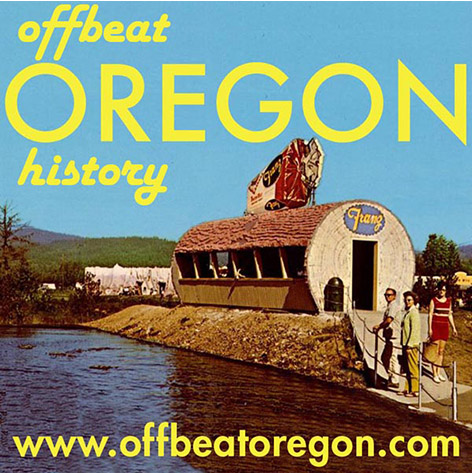CONTINUED FROM THE PRINT EDITION:
Harney rancher saved pilot Ted Barber's life
But, the Lord must have been listening to Ted, because even when his luck did run out, he caught a break. It happened just after one of those white-knuckle takeoffs. The Waco was a little over 100 feet off the ground, climbing at maximum power, when the fuel line broke and the engine stopped dead. Acting on instinct, Ted put the plane into a banking turn to try and get back to his airfield. Then he came to his senses. He had nowhere near enough elevation to make it through the turn. This was an extremely common way for early aviators to die, by the way — they lost power on takeoff, then stalled and spun into the ground while trying to turn back. “One of the most important rules every flying student learns is to never try to turn close to the ground with a dead engine,” Ted wrote, “but when the chips are down, we all do it.” In Ted’s case, he came to his senses in the literal nick of time. He threw all his controls into the maximum left-turn position, struggling to bring the wings level again as the ground rushed up. He barely made it. The wings came level just as he reached the ground in a surprisingly smooth three-point landing. The random piece of terrain that the plane came down on just happened to be one of the only rock-free spots around, and the few little sage bushes growing there barely even damaged the wings. That was the landing that should have killed Ted Barber. Quite literally, the margin between life and death was about 10 seconds. If he’d caught his mistake a quarter of a minute later, he would have been too late, and his right wingtip would have touched the ground first. The Waco 9 stalls at just 35 miles an hour, but that’s plenty fast enough to kill everyone on board when the plane starts cartwheeling through the sagebrush.
AFTER THE FUEL line was repaired, the plane gave no further trouble until the last flight of the day, when the same fuel line broke again. This time, it cut loose at 500 feet, so Ted was able to pick a field to land in. But, of course, he couldn’t do much of an inspection on it; so, the one he picked had a bunch of medium-sized rocks hiding beneath its sagebrush cover. The damage wasn’t too terrible; a tire blew out, and the tail skid broke. The lashing sagebrush also tore up the fabric pretty badly on the lower wing. By the time the tire was fixed, it was getting late, and Ted was supposed to fly the buckaroo boss of a big beef ranch home at the end of the night. Not wanting to push his luck too hard, Ted decided to fly the passenger out of the field he crash-landed in. It was about 350 feet long, but there was now a brisk headwind ahead of some ominous-looking storm clouds. So, with the passenger strapped in, Ted punched the throttle and went for it. He soon realized he wasn’t going to make it. There was a barbed-wire fence at the end of the field, and he was going into it. At the last second he risked a stall to gain enough altitude to get most of his lower wings over the fenceposts ... and as a result, instead of shearing off both bottom wings, they just got long rips put in them by the fenceposts. The plane bounced to a stop among the rocks and sage on the other side of the fence. After that, the buckaroo boss was very happy to spend the night safely stranded in Wild Hog. But Ted lined the plane up to try again. He might have been talking to the Lord all day, but he obviously hadn’t been doing a whole lot of listening, because what he was about to do was one of the dumbest mistakes Ted Barber ever made. It was a mistake that by rights should have been fatal, a mistake that would require something closely approximating a bona-fide water-walking miracle to get him out of: Instead of spending the night in Wild Hog with his passenger, he climbed back into his badly damaged airplane, and took off in it.
WITHOUT HIS PASSENGER, Ted was able to get the Waco airborne without incident. Then he struggled, in the waning light, to get enough altitude to fly over Steens Mountain. By the time he figured out he couldn’t do it — his damaged wings just weren’t giving enough lift in the thin and turbulent air — it was too dark to see his fuel gauge. By the light of the stars he managed to make out the time on his watch, and realized he had maybe five minutes’ worth of fuel left. If he’d realized this earlier, Ted could have flown leisurely along looking for a ranch house to set the Waco down next to. He could have overflown a promising hayfield to make sure it was safe — no fences, no big rocks, no stone walls — and then made a hair-raising but basically safe power-on landing in the gloaming twilight, just in time for supper at the ranch. Instead, he found himself flying just above stall speed, a few dozen feet above a vague line of lighter darkness below — the star-lit signature of a dusty country road, which he had by sheer dumb luck (or divine intervention) stumbled across. Crashing on a road would be far better than crashing on the open range someplace. The Waco’s engine droned on. Ted couldn’t understand why it was still running. It should have sipped its last drop of gasoline several minutes ago.
|




